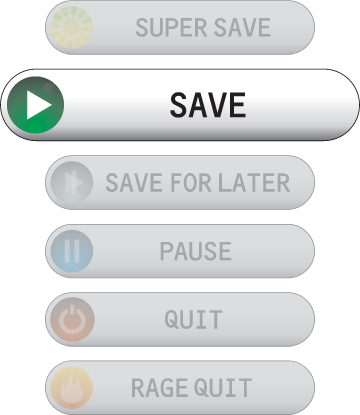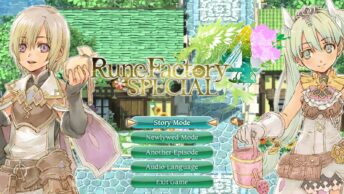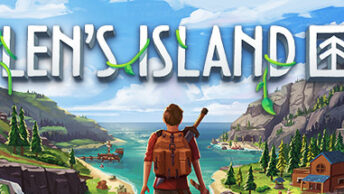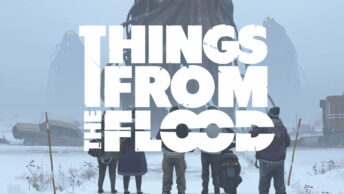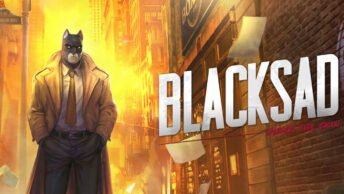In a town like Thimbleweed Park, a dead body is the least of your problems.
Steam: Released
Genre: Point ‘n’ Click, Adventure, Pixel Graphics
Developer: Terrible Toybox
Publisher: Terrible Toybox
Release Date: 30 Mar, 2017
Type: Single-player
Thimbleweed Park at its core is a classically inspired Point and Click Adventure game with a murder mystery theme set back 1987 (which not-so coincidently was also when Maniac Mansion was released). The basic gameplay of any Point and Click Adventure is that you look for things in the environment that you can pick up or at least look at or interact with. Since you are investigating a murder, not even a speck of dust should be ignored. In fact specks of dust are this games “hidden packages” there are tons of them around, and you get achievements for collecting them (or not collecting them). Since I am a veteran Point and Click Adventurer, I have a compulsive habit of stuffing any objects I find into my pocket just in case it might prove useful later, be it a picture of the dead body or an empty tuna can with lingering fish smell, you just never know when you might need something!

Thimbleweed Park features multiple playable characters. The first and foremost are “The Feds” who are investigating the murder by the river outside of Thimbleweed Park. The game throws a curveball at you right away as it appears like one of the Feds might not even be who he claims to be. I will not spoil anything for this story though, so you will have to find out for yourself if those doubts are warranted or not. The rest of the cast is initially introduced to you via a series of flashbacks that expands a little on that character’s history before you can control them in the present. It’s easy to control all of the characters although inventory management may get a bit confusing. This is because each has their own separate inventory and you might forget who is carrying what without switching to them. Luckily the interface is smooth and clean to use so switching is never an issue.

The concept of the game seems quite simple. Your job is to figure out whom the dead man was and who murdered him. It’s up to the Feds to investigate the peculiar town in order to find all the clues and details they need to crack the case. You will very quickly learn that solving the murder is the least of your problems and is actually only the first half or so of the game. The foremost sign that something is wrong with the town is the fact that many of the stores are out of business now. Another sign of trouble is the fact the Sheriff“-a-reno” looks strikingly similar to the Coroner and also holds a great resemblance to the Hotel Manager. One might assume that this is lazy reusing of head sprites and voice talent and perhaps that was the intent, but the way they play it off in game makes it well worth the lazy façade. Each one has a peculiar speech mannerism which clearly makes them different people even if they sometimes mess up and use the other people’s mannerisms! The game comments on their similarities frequently with the playable characters questioning if they had met before or if they were also someone else. Thimbleweed Park, much like their earlier works, is loaded with jokes and visual gags which make it a much more interesting game than it may appear at first glance. It even goes so far as to lampoon another famous Adventure game developer for using cheap deaths to prolong gameplay (something Thimbleweed Park doesn’t rely on).

Gameplay itself, as one might expect, is pointing and clicking on and at things to get some kind of reaction. There is the verb pool in the lower left that changes how your clicks will interact with the various items you are trying to work with. Each character has a checklist of the things they need to accomplish so if you get stuck you can always refer to that for inspiration. If you get really stuck, and you likely will depending on if you are in Casual or Hard mode, you can always flip to another character and progress through their checklist until inspiration strikes or you stumble upon something useful to solve the puzzle.
The game is just that, a series of puzzles strung together until you ultimately manage to finish the game. If you are not well versed in puzzle games or if thinking too hard gives you a headache, there is casual mode. It has all the more straightforward puzzles and cuts out the more convoluted or otherwise difficult to wrap your head around puzzles. Having an overabundance of hubris from playing so many adventure games in the past, I naturally chose the hard mode as I did back when Monkey Island 2 gave me this same option. This act of bravado may or may not have been a mistake because unlike Monkey Island, I had a lot more trouble with solving some of the puzzles. I pressed on though because I didn’t want to miss out on anything the game had to offer. If it meant me straining my brain and spinning my mental wheels as I tried to puzzle out what I should do next, so be it. Some of the puzzles were not so much puzzles, but just rote memorization of facts, such as a phone number or technical data. That isn’t a bad thing, but it isn’t quite as much fun as figuring out how to combine seemingly random objects to solve a puzzle.

The game is set in the Tri-island… sorry, I mean Tri-Thimbleweed Park area, which is basically the highway leading to the town of Thimbleweed Park and the various businesses and places in the outskirts of town. The town itself has a few separate streets, each having at least one open business for you to visit, but for the most part, it’s a ghost town. The phonebook implies there used to be a lot of people living there, but after calling a handful of them, you soon learn almost no one is home. That’s quite understandable though as Thimbleweed Park’s one and only main industry, the Pillow Factory, burned down meaning there were really not that many jobs left in the town. Without many available jobs, people could no longer afford to live there. Without people living in town and buying their merchandise, the smaller shops had to close down as well. That may be the reason for the thick phonebook even though there aren’t many people left in town. It also might be the fact that the game was funded via Kickstarter and the names in the phonebook are actually part of a list honouring their backers as is the vast library found in the mansion. Once you creatively acquire your first map of the area, you can use it for fast travel of sorts. You can point to where you want to go and quickly run there. Without having a shared inventory that means only the character who made the map can fast travel, however, you can get additional maps later so it isn’t an issue.

The graphics in the game are very polished and give a very strong retro feel. Other than the higher pixel count used, the game likely would not have looked amiss had it actually been released in 1987. Everything about it screams “I’m a classic Point and Click Adventure from the golden age of Point and Click Adventure games.” The game shamelessly references Monkey Island and Maniac Mansion which brings a certain kind of joy to those of us who played those games endlessly in the past. The liberal dropping of the trademark symbol (™) on everything was probably one of the best callbacks they could have done since was a running gag though most of the Monkey Island series. Another is Guybrush Threepwood’s “go to” excuse of selling Fine Leather Jackets when he is trying to cover his real motives (actually originally from Indiana Jones, but if you factor in that the age of piracy took place long before Indiana Jones went on his adventures, it is clear that Indiana Jones stole it from Guybrush!) There are other references in there as well and they were a joy to find them as I went.

The sound in this game is also reminiscent of the early titles of the genre, although this one is fully voice acted unlike the earliest games. The music all works really well to help set the mood and the occasional wacky out of place sound effects help make it a much more comical experience. There is even a bit of humour that hits close to home for me, and I am sure for many people where the radio stations always seem to play the same song over and over again until you practically know it by heart. In fact, in Thimbleweed Park, the radio station only plays one song period.
The controls of this game are quite fluid. I never really encountered any kind of control issues other than sometimes the speck of dust I was after was hiding behind my inventory or action verb choice box GUI. This rendered me unable to grab it easily. You can use either a traditional keyboard or mouse like any true Point and Click Adventure fan is likely very accustomed to, or you can use your gamepad as the game has full controller support. I tried it both ways and while both ways worked well, I still preferred the mouse over the gamepad. There are a limited number of customization options in the options menu but really, for this kind of game there is generally not much customization that is particularly needed. The options menu is actually where the game throws one of its first real jokes at you which is toilet paper hanging options. I don’t know how many of you have ever worked in an office but the over-handed versus under-handed hanging of toilet paper is a matter of much contention. Even in some other video games people have become so annoyed that the toilet paper isn’t hanging in their preferred direction that mods have actually been made for the sole purpose flipping it to face the direction they prefer. Well the developers of Thimbleweed Park clearly knew what a controversial topic the proper direction to hang toilet paper is so they gave the users the option to choose their preferred way thus making everyone happy!

This game in no way meant to be taken as a serious murder mystery game. If you are expecting a serious crime solving game, you clearly did not read the description very well. One of the first bit of humour that comes out in the game is that no one actually seems to care about the dead body lying in the river, not even the coroner whose job is to care about dead bodies, nor the sheriff whose job it is to investigate the murder! As you progress through the game you will see various forms of satire, including the ability to repeat nearly the same dialogue but having different results. I certainly don’t want to eat at the local restaurant after all those health violations! The fourth wall is broken so many times that they end up giving up on fixing it later on and just roll with it. You can help shape the story somewhat by choosing which dialogue option you wish to pursue. Sometimes you can eventually do them all, other times it locks you out of seeing the other versions, so you need to choose carefully from the options!
There are a few things in the game that never really seem to get explained, but it is also possible I just missed something as I progressed through the game as I had checkboxes left unchecked by the time I was finishing the game. A few mysteries here and there that I never actually managed to solve. Perhaps they were meant as proverbial red herrings or perhaps they will be something I will discover the next time I visit Thimbleweed Park because I know I will be back.

It’s incredibly hard to write a review for this sort of game because almost anything I say or do could be considered spoilers. Having played through the game entirely once in hard mode and again in casual just to see the difference (in hindsight, should have done that the other way around, curse my egotism!), I can let you know that if you are new to Point and Click Adventures, this one might prove to be quite challenging and perhaps a little frustrating for you. There were some puzzles that I solved pretty easily because I recognized them as variations on puzzles I encountered before, most likely from one of my 100+ playthroughs of the Monkey Island series that might otherwise have been a bit tricky for a novice to solve. If you are a fan of these sorts of games, and have knack and love for solving puzzles, then Thimbleweed Park is definitely one you should consider picking up as it offers almost everything you came to love from the old classic titles. There is one last reference made in this game, and it was actually appreciated. Guybrush once said you should never pay more than $20 for a computer game, and Thimbleweed Park reflects that with its $19.99 (US) price tag.


